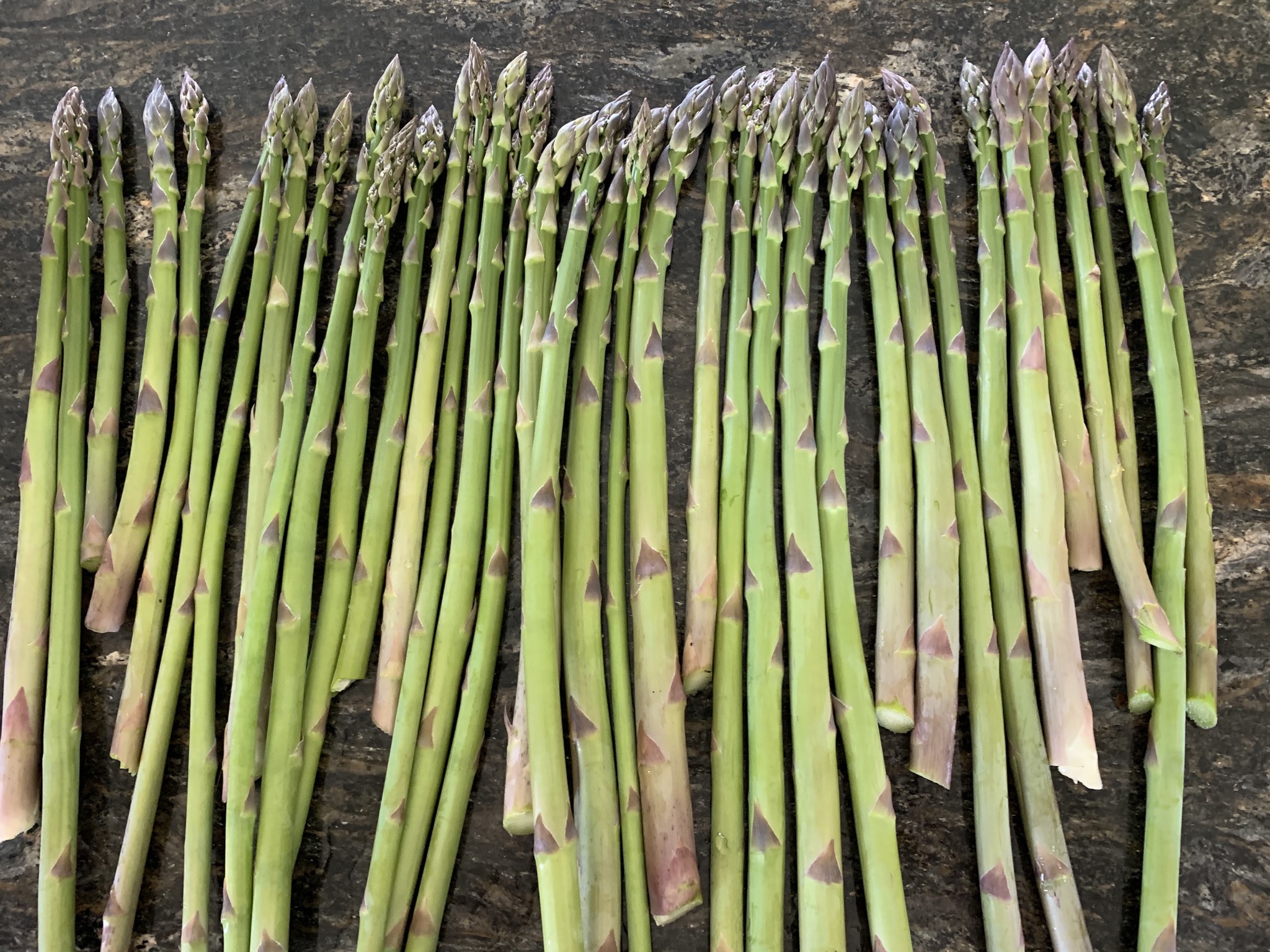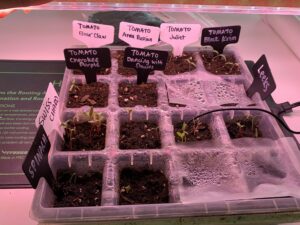We end up with a lot of asparagus each year, and I mean A LOT. I have 25 asparagus plants out, and they produce like gang busters all season. It’s so amazingly tasty out of the garden that I often eat it raw while I’m cutting. It’s so good! I’ve been growing this asparagus for six years now, and I’ve been experimenting with longer cuts for the past four years. Read below for my tips on increasing your asparagus yield.
1. Include female plants
When I was planning our asparagus bed years ago, the recommend number of plants was 10 plants for every person in your family. That would have been 40 plants for us. I knew how long my bed was going to be (30 feet x 2 feet) and that 10 of it was going to be a bean trellis, so I only had space for about twenty plants. I planted those first twenty plants (Jersey Knight), but when they started to come up it looked like some of the plants didn’t come out, so I bought 5 more Mary Washington plants at our hardware store.
Now, you may already know this, and I did at the time but ignored it, but Jersey Knight is an all male variety and Martha Washington has some females. Well, it turned out that at least four of the plants I bought were female, and well, let’s just say they all get along VERY well. My asparagus patch grows every year, and I have volunteers in every bit of landscaping all over the yard — anywhere we don’t now.
So if you want lots of asparagus, go ahead and get some female plants. It’ll provide a buffer for you if you ever accidentally over-harvest a plant, and your patch will grow a little bit each year. More plants means increased asparagus yield.
2. Set up a very good bed
Your asparagus will be in its spot for at least twenty years, so go ahead and give it a nice house. My bed is cement brick, lined with plastic, and we brought in a good soil/compost mix to fill it. I also mulch every year with undyed hardwood mulch to keep maintenance low and to keep providing the area with decomposing material. Healthy plants is a good way to increase your asparagus yield.
Cut long
Now, this is the biggest thing I do to increase yields: I cut long. Most instructions for harvesting asparagus say to cut it at 6-8 inches. Well, you can, but why would you do that when you can easily get 12 or more inches of delicious, home-grown asparagus?
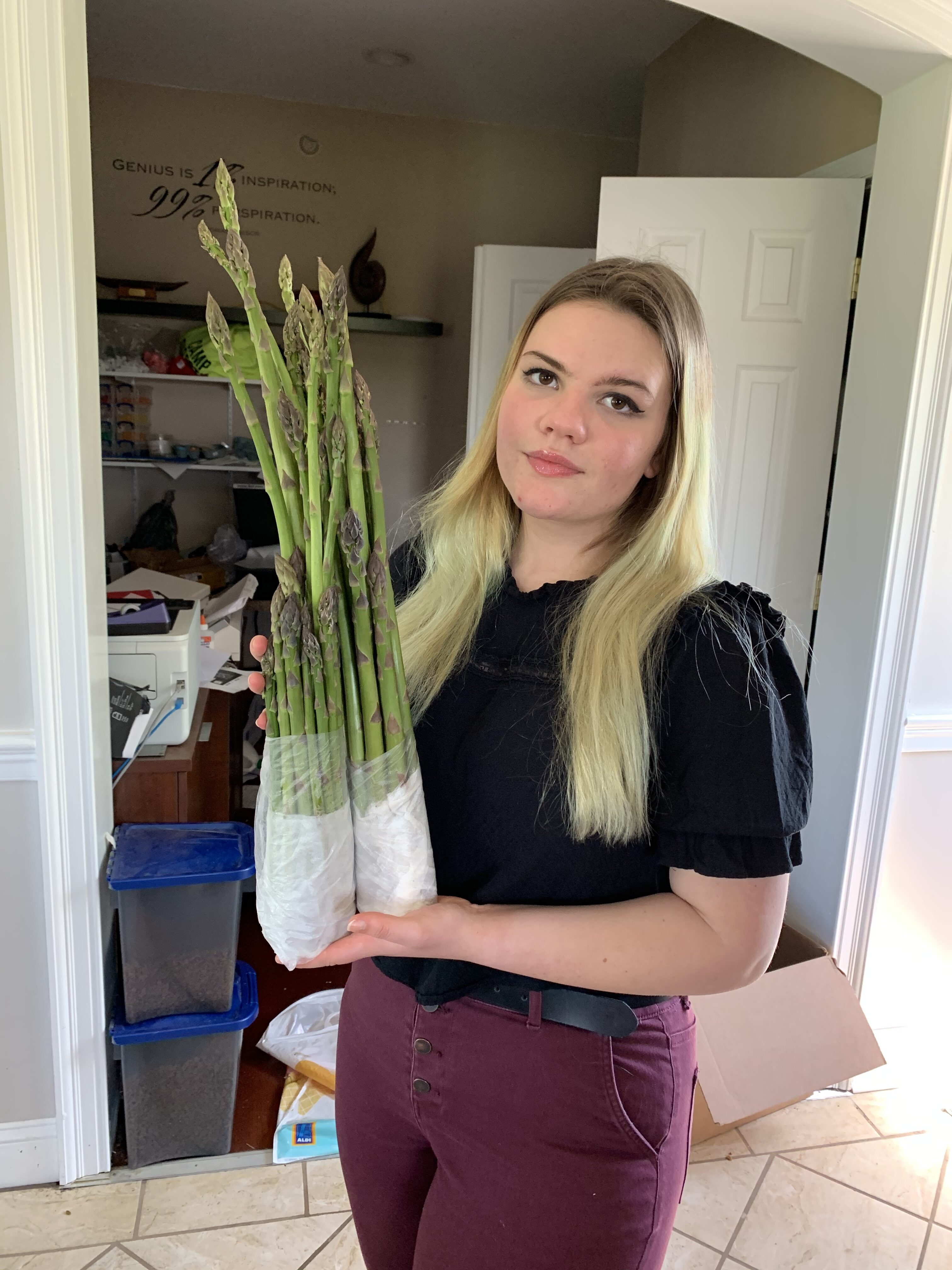
You can cut and enjoy asparagus at almost any length as long as the tips of the asparagus are still tight. Early in the season, when it’s cold, the tips will take much longer to open up, and you can let them get quite long before cutting. Asparagus gets woody from the bottom up, so even if the base is getting stiff, the upper part of the spear is still good for eating. Cut it at ground level, and just cut off the extra 5-6 inches of woody stem when you go to cook your asparagus. It’ll be delicious and tender, just like the short asparagus spears.
Waiting to cut your asparagus when it’s up to two feet means you can double or triple your yield, even if you have to cut off six inches at the bottoms of the spear. But don’t worry, cutting the asparagus off long doesn’t hurt the plant — I’ve been doing it for years. New spears just grow up in their place.
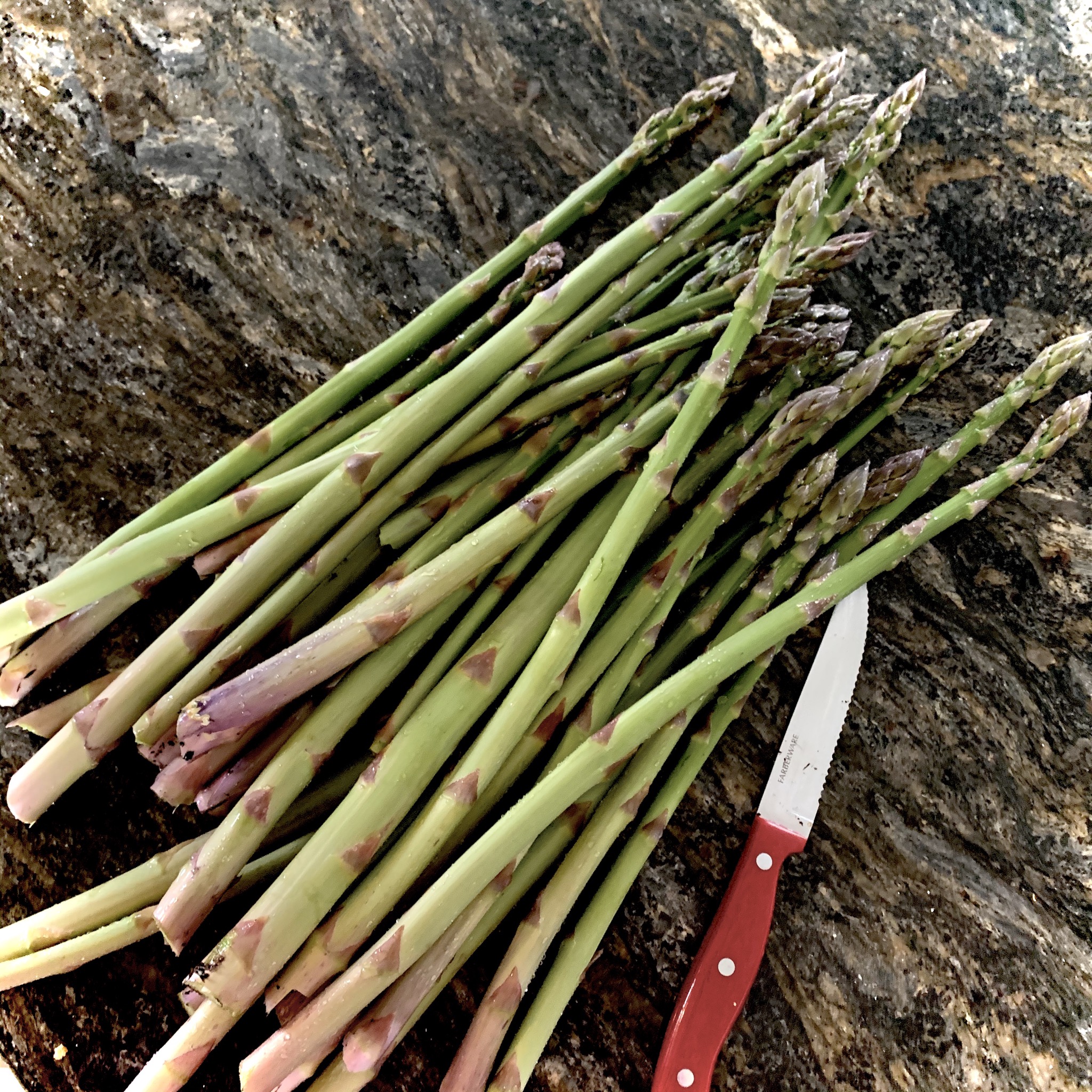
Warm weather is what makes asparagus grow and fern out quickly. If it’s cool, you can wait and harvest asparagus when it’s very tall, and still have tight tips. Asparagus that has just started to open is still okay to eat. I’ve found that it’s only no good after the little bracts come out and are over 3/4” long. At that point they grow outward, not upward. Once that happens, the spear isn’t good for eating. The long spear in the picture below needs to be eaten right away:
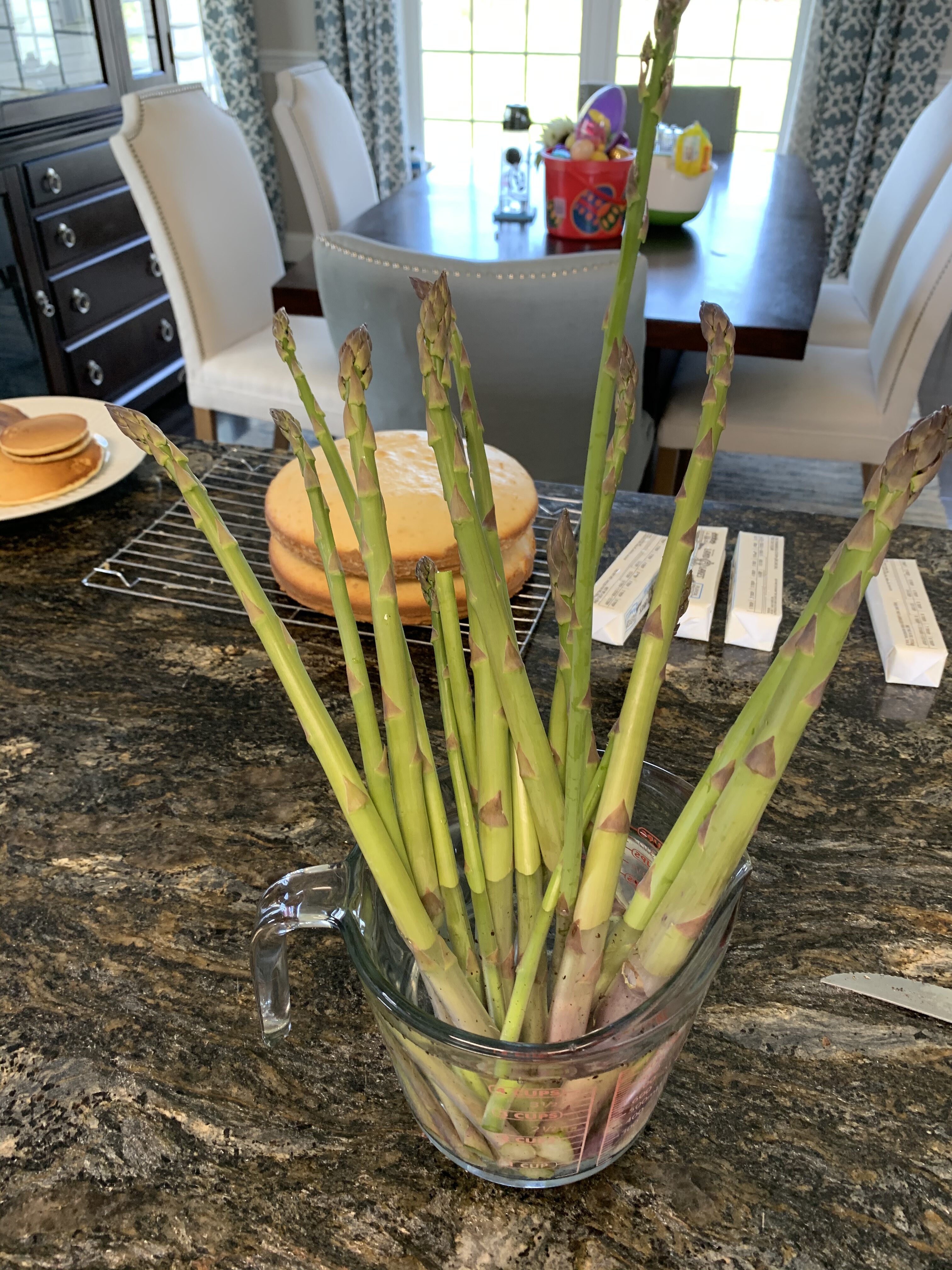
Your asparagus will continue to grow inside your house, and after a few days it’ll bend toward the light. No worries. It’s still good to eat—it’s just curvy, and asparagus that can curve isn’t woody, but tender.
Thick vs Thin Spears: A tenderness myth
People always say they prefer thin asparagus because they imagine that it’s more tender. It is true that thicker asparagus that you get from the store isn’t as tender as the thin stuff; however, fresh cut thick asparagus is every bit as tender as the thin stuff. As your plants grow, they will produce thicker and thicker spears. This is a sign of healthy plants! Thin plants are still babies or are unhealthy. You know how asparagus volunteers are always so spindly? Well, it’s because they aren’t growing in a place where they can thrive, or because they are still very young. I prefer asparagus when it’s about as thick as my finger for mouth-feel, but even thicker spears can handle grilling much better.
Thick stalks have the same amount of vascular structure (strings) as thin stalks, it’s just spread out more. Thick asparagus can taste juicer than thin asparagus, and I find it just as tasty. In fact lots of there think the same thing:
- Cooks illustrated tastes test found better texture with thin asparagus – https://www.cooksillustrated.com/how_tos/5859-selecting-thick-vs-thin-of-asparagus
- Pennsylvania State University found thicker means more tender asparagus https://news.psu.edu/story/186083/2000/03/27/skinny-asparagus-thicker-means-more-tender
- LA Times tested asparagus recipes and found thick and thin are good in different ways – https://www.latimes.com/food/dailydish/la-dd-calcook-asparagus-recipes-20140308-story.html
Sometimes people think they need to peel asparagus when it’s thick. Maybe, but only if it’s old and drying up. Asparagus that you grow at home shouldn’t usually need peeling. I only peel if I have a recipe that calls for more asparagus that I have. By peeling I can use up the more of the woody base.
Conclusion
So, go ahead and cut your asparagus long and test it! I think you’ll find that yes, you still need to cut off some of the woody base, but you can drastically increase yields by waiting to cut.
